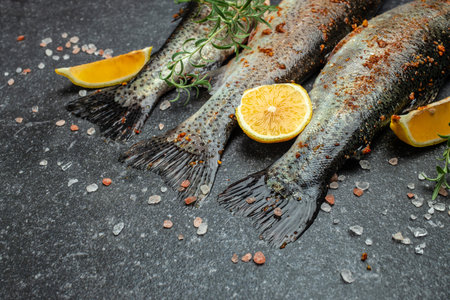1. Understanding Your Fishs Natural Diet
When caring for pet fish, its important to understand what they eat in their natural habitat. Different fish species have evolved to consume specific types of food, and replicating their wild diet as closely as possible ensures they stay healthy in captivity.
Types of Fish Diets
Fish can generally be categorized based on their natural feeding habits:
| Diet Type | Description | Examples |
|---|---|---|
| Herbivores | These fish primarily eat plant-based foods such as algae, seaweed, and aquatic plants. | Molly Fish, Plecos |
| Carnivores | Carnivorous fish rely on a protein-rich diet consisting of smaller fish, insects, or crustaceans. | Bettas, Oscars |
| Omnivores | Omnivorous species consume both plant matter and animal-based foods. | Guppies, Goldfish |
| Detritivores | These fish feed on decomposing organic material and help keep the tank clean. | Corydoras Catfish, Loaches |
How Wild Diets Influence Captive Nutrition
A fish’s diet in the wild plays a crucial role in determining its nutritional needs when kept in an aquarium. For instance:
- Herbivorous fish: Require fiber-rich diets with plenty of vegetables and algae-based foods.
- Carnivorous fish: Need high-protein meals such as frozen or live foods like bloodworms and brine shrimp.
- Omnivorous fish: Thrive on a balanced mix of plant- and animal-based foods.
- Detritivores: Benefit from sinking pellets and occasional fresh vegetables to supplement their scavenging behavior.
Providing the Right Nutrition for Your Pet Fish
Understanding your fish’s natural diet helps you choose the best food options available in pet stores. Look for specialized formulas that match their dietary requirements while also offering variety to ensure optimal health. By mimicking their natural eating habits, you’ll promote better digestion, vibrant colors, and overall well-being for your aquatic pets.
2. Carnivores, Herbivores, and Omnivores: Dietary Differences
Just like land animals, fish have different dietary needs based on their natural eating habits. Understanding whether your pet fish is a carnivore, herbivore, or omnivore is essential for providing the right nutrition. Let’s explore the differences and how you can ensure a balanced diet for each type.
Carnivorous Fish: Protein-Packed Diets
Carnivorous fish thrive on a diet rich in protein. In the wild, they feed on smaller fish, insects, and crustaceans. To replicate this in captivity, you should provide high-protein foods such as:
- Live or frozen foods like bloodworms, brine shrimp, and daphnia
- Pellets and flakes formulated for carnivorous species
- Occasional treats like chopped seafood (shrimp or fish fillet)
A protein-rich diet supports muscle growth and energy levels, but it’s important to avoid overfeeding, as excess protein can lead to water quality issues.
Herbivorous Fish: Plant-Based Nutrition
Herbivorous fish primarily consume plant matter such as algae and aquatic plants. Since their digestive systems are designed to process fiber-rich foods, their diet should include:
- Algae wafers and spirulina-based pellets
- Blanched vegetables like zucchini, spinach, and lettuce
- Naturally occurring algae in the tank (a great supplemental food source)
Providing a plant-based diet ensures proper digestion and prevents deficiencies. Since plant matter takes longer to digest, herbivores often need to eat more frequently than carnivores.
Omnivorous Fish: A Balanced Diet
Omnivorous fish enjoy both plant-based and protein-rich foods. They require a varied diet to meet all their nutritional needs. A good feeding plan includes:
- A mix of high-quality pellets or flakes containing both proteins and plant ingredients
- Live or frozen treats like bloodworms or brine shrimp
- Vegetables such as peas, cucumber slices, or seaweed sheets
This combination ensures they get the necessary vitamins, minerals, and proteins for optimal health.
Comparison of Fish Diet Types
| Diet Type | Main Food Sources | Recommended Foods |
|---|---|---|
| Carnivores | Meat-based proteins | Bloodworms, brine shrimp, specialized pellets |
| Herbivores | Plant-based foods | Algae wafers, blanched veggies, spirulina flakes |
| Omnivores | A mix of both plant and meat sources | Pellets with mixed ingredients, live/frozen foods, vegetables |
Feeding Tips for Healthy Fish
- Feed small portions multiple times a day rather than one large meal.
- Avoid overfeeding to prevent water contamination and obesity.
- Use high-quality commercial food that meets your fish’s specific dietary needs.
- Add variety to keep your fish engaged and healthy.
By understanding your fishs natural dietary habits and providing the right nutrition, you can help them thrive in their aquarium environment.
![]()
3. Specialized Diets for Popular Aquarium Fish
Different types of pet fish have unique dietary needs, and providing the right nutrition is essential for their health and longevity. Below, we’ll explore the best food choices for some of the most popular aquarium fish, including bettas, goldfish, cichlids, and tropical fish.
Bettas: High-Protein Carnivores
Bettas are carnivorous fish that require a high-protein diet to thrive. They do best with specially formulated betta pellets or flakes supplemented with live or frozen foods like bloodworms and brine shrimp.
Best Food Choices for Bettas:
- Betta Pellets: A staple diet designed specifically for bettas.
- Frozen or Live Bloodworms: Provides essential protein and nutrients.
- Daphnia: Helps with digestion and overall health.
- Avoid Excessive Fillers: Foods with too many fillers can lead to digestive issues.
Goldfish: Omnivores with Special Needs
Goldfish have a slower digestive system and require a balanced diet that includes both plant-based and protein-rich foods. Overfeeding can lead to health problems like swim bladder disease.
Best Food Choices for Goldfish:
| Food Type | Benefits |
|---|---|
| Sinking Pellets | Easier to digest than floating food. |
| Blanched Vegetables (Spinach, Peas) | Aids digestion and provides fiber. |
| Daphnia & Brine Shrimp | Adds protein while keeping a balanced diet. |
| Avoid Excess Protein | Too much can cause digestive issues. |
Cichlids: Diverse Diets Based on Species
Cichlids come in various species with different dietary requirements. Some are herbivores, while others are carnivores or omnivores. Understanding your cichlids specific needs is crucial.
Cichlid Diet Types:
- Carnivorous Cichlids: Require high-protein diets with krill, shrimp, and insect larvae.
- Herbivorous Cichlids: Thrive on spirulina flakes, algae wafers, and plant-based foods.
- Omnivorous Cichlids: Need a mix of both animal and plant-based foods for balanced nutrition.
Tropical Fish: Balanced Nutrition for Variety
Tropical fish include species like tetras, guppies, mollies, and angelfish. Their diets should be well-balanced to support their active lifestyles and vibrant colors.
Best Food Choices for Tropical Fish:
- Tropical Flakes & Pellets: Provide essential vitamins and minerals.
- Dried or Frozen Bloodworms: Great protein source for energy and color enhancement.
- Shrimp-Based Foods: Supports healthy growth and development.
- Avoid Overfeeding: Small meals multiple times a day prevent waste buildup in the tank.
Selecting the right diet based on your pet fish’s species will help ensure they stay healthy, active, and vibrant in your aquarium. Providing a variety of high-quality foods mimics their natural diet and supports long-term well-being.
4. Live, Frozen, and Pellet Food: Pros and Cons
Choosing the right food for your pet fish is essential for their health and longevity. Different types of fish food—live, frozen, freeze-dried, and pellets—offer unique benefits and drawbacks. Understanding these options will help you provide the best diet for your aquatic pet.
Live Food
Live food, such as brine shrimp, daphnia, and bloodworms, closely mimics a fish’s natural diet. It is rich in nutrients and can encourage natural hunting behaviors in predatory species.
Pros:
- High in essential nutrients
- Encourages natural feeding behaviors
- Great for carnivorous and omnivorous fish
Cons:
- Poor storage life—must be used quickly
- Risk of introducing parasites or diseases
- More expensive than other options
Frozen Food
Frozen fish food includes items like frozen brine shrimp, mysis shrimp, and bloodworms. This type of food retains most of the nutrients found in live food while offering better storage options.
Pros:
- Nutrient-rich with minimal processing
- Easier to store than live food
- No risk of introducing live parasites
Cons:
- Might require thawing before feeding
- Slightly more expensive than pellets or flakes
- Might not be suitable for all fish species
Freeze-Dried Food
This type of food is dehydrated to remove moisture while preserving its nutritional value. It includes options like freeze-dried bloodworms, tubifex worms, and krill.
Pros:
- Easier to store and longer shelf life than frozen/live food
- No risk of disease transmission from live prey
- Lighter and easier to portion out for feeding
Cons:
- Slightly less nutritious compared to fresh or frozen food
- Might not be as appealing to some fish species
- Nutritional value may degrade over time if not stored properly
Pellet Food
Pellets are one of the most convenient fish food choices. They come in sinking or floating varieties and are available in different formulas tailored to various species.
Pros:
- Easily available and affordable
- Nutritionally balanced for specific fish species
- No risk of introducing parasites or bacteria
Cons:
- Might contain fillers that some fish struggle to digest
- Nutritional content can vary between brands
- Difficult for some small or picky eaters to consume
Comparison Table: Fish Food Types at a Glance
| Food Type | Main Benefits | Main Drawbacks | Suits These Fish Types Best |
|---|---|---|---|
| Live Food | Nutrient-rich, encourages hunting behavior | Spoils quickly, risk of parasites, expensive | Carnivorous & predatory fish (e.g., bettas, cichlids) |
| Frozen Food | Nutrient-dense, safe from parasites, easy to store long-term | Might require thawing, slightly pricey | A wide variety including community fish & predators |
| Freeze-Dried Food | No disease risks, long shelf life, lightweight | Slight nutrient loss, might not appeal to all fish | Bettas, tetras, guppies & mid-sized tropical fish |
| Pellet Food | Easily available, nutritionally balanced | Might contain fillers; quality varies by brand | Tropical fish, goldfish & bottom feeders depending on pellet type |
Selecting the right type of food depends on your pet fish’s dietary needs and preferences. Some species thrive on a mix of pellet and live or frozen foods for balanced nutrition. Always consider your fish’s species-specific requirements when making feeding decisions.
5. Common Dietary Mistakes and How to Avoid Them
Feeding your pet fish may seem simple, but many owners unknowingly make mistakes that can negatively impact their fish’s health. Understanding these common errors and learning how to avoid them will help keep your fish happy and thriving.
Overfeeding
One of the most frequent mistakes fish owners make is overfeeding. Fish have small stomachs, and uneaten food can quickly decay, leading to poor water quality and health issues.
Signs of Overfeeding:
- Cloudy water due to excess food breaking down
- Mold or fungus growing on uneaten food
- Fish appearing bloated or sluggish
How to Avoid Overfeeding:
- Feed small portions that your fish can consume within 2-3 minutes
- Remove any uneaten food after feeding time
- Create a feeding schedule to prevent accidental overfeeding
Poor Food Choices
The type of food you provide is just as important as how much you feed. Many fish species require specific diets, and feeding the wrong food can lead to malnutrition and illness.
| Mistake | Why Its a Problem | How to Fix It |
|---|---|---|
| Feeding only flakes or pellets | Lacks variety and essential nutrients | Add live, frozen, or fresh foods based on species needs |
| Giving human food scraps | Can contain harmful ingredients or lack proper nutrients | Stick to high-quality fish food designed for your species |
| No consideration for herbivore vs. carnivore diets | Mismatched diet can cause digestive issues or nutrient deficiencies | Research dietary needs before choosing food types |
Inefficient Feeding Schedule
An inconsistent feeding routine can stress your fish and lead to health problems. Some species require multiple small meals per day, while others thrive with just one feeding.
Tips for a Proper Feeding Schedule:
- Research how often your specific fish species should be fed
- Avoid feeding too frequently—most adult fish do well with one or two meals per day
- If unsure, observe your fish’s behavior; if they ignore food, you may be overfeeding


